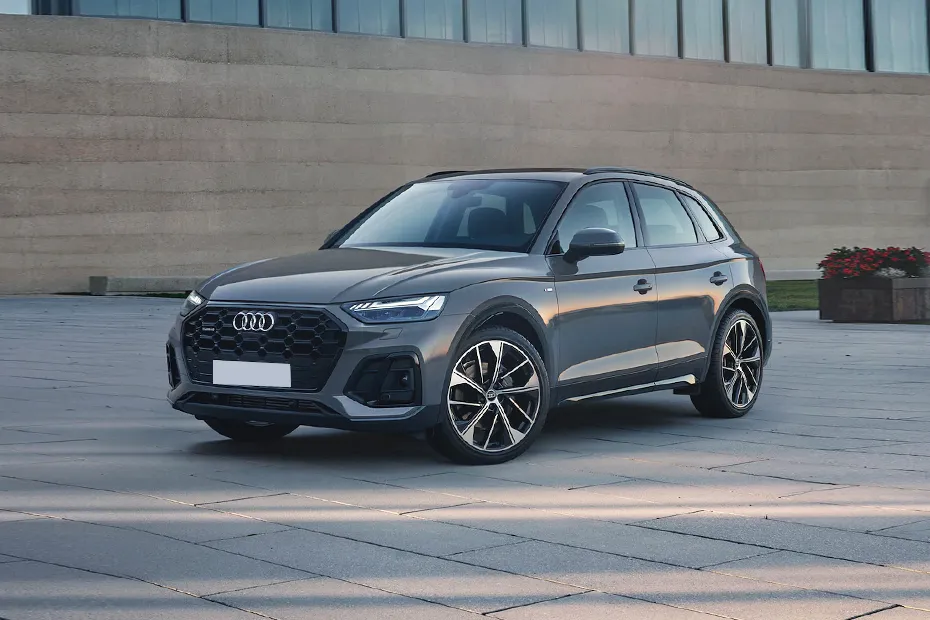In recent years, auto manufacturers have increasingly adopted the Auto Stop-Start system as a standard feature across many vehicle models. This system, designed to reduce fuel consumption and emissions by shutting off the engine when the vehicle is stopped, such as at traffic lights, has stirred a mix of praise and criticism among drivers.
While it may offer measurable environmental and efficiency benefits, many drivers find the feature intrusive, inconvenient, or outright frustrating. From the delay in engine restart to the unnatural feel it adds to the driving experience, Auto Stop-Start is often cited as one of the most disliked features in modern vehicles.
The primary purpose of Auto Stop-Start is to improve fuel efficiency and reduce greenhouse gas emissions. Especially in city driving, where frequent stops are common, the system can lead to minor yet consistent fuel savings over time.
It’s part of a broader trend toward electrification and regulatory compliance, as manufacturers work to meet stricter environmental standards.
However, while the idea is noble, its real-world execution doesn’t always align with driver expectations. Many prefer to have full control over when their engine runs or stops, especially in extreme weather conditions, stop-and-go traffic, or when driving through hilly terrain.
The sensation of the engine cutting out and restarting repeatedly can feel jarring or even unsafe, particularly in vehicles with less refined systems.
What makes the situation more frustrating for many consumers is that some vehicles either don’t allow you to disable the Auto Stop-Start feature permanently or don’t allow it to be turned off at all. In many cases, drivers can press a button to disable the feature temporarily, but the system reactivates the next time the car is started.
Even aftermarket solutions like memory modules or software updates are discouraged or rendered ineffective by manufacturers. In this article, we’ll look at ten vehicles that either don’t allow Auto Stop-Start to be turned off or make it nearly impossible without third-party modifications.
These vehicles represent a growing industry trend where driver autonomy is gradually being traded for compliance and automation.
Also read: 10 Cars With Rear Seats That Fold Fully Flat for Maximum Cargo Space and Everyday Flexibility

1. Ford Escape Hybrid
The Ford Escape Hybrid is one of Ford’s most successful efforts to blend everyday usability with hybrid efficiency, and its popularity reflects its broad appeal.
However, for all its strengths—impressive MPG, a comfortable ride, and a modern tech suite—it includes one major drawback: an Auto Stop-Start system that simply cannot be turned off. This system is deeply embedded in the hybrid’s powertrain architecture.
The vehicle’s ability to switch seamlessly between electric power and gasoline requires the Auto Stop-Start feature to engage frequently in stop-and-go conditions, especially to maximize fuel efficiency.
There is no user-accessible switch or menu to disable it, and unlike its non-hybrid counterparts, it doesn’t offer even a temporary off button. Drivers are left with no choice but to adapt to a system that may not suit their preferences or driving conditions.
This limitation becomes even more noticeable in environments where frequent engine cycling can be jarring or inconvenient. In urban traffic, for instance, where red lights and stop signs are frequent, the constant shutting down and restarting of the engine, even if seamless, can become irritating over time.
For some, especially those unfamiliar with hybrids, it can feel like a lack of responsiveness or hesitation when they’re trying to pull out quickly.
In cold weather, the stop-start system may also interfere with heating performance, as the engine must shut down even when it’s needed to warm the cabin. Though the system will occasionally override itself for climate or battery management, it’s never fully in the driver’s control.
The result is a driving experience that prioritizes fuel savings over autonomy. While Ford markets this hybrid system as a forward-thinking innovation, it raises questions about how much control drivers should retain in increasingly automated vehicles.
For many Escape Hybrid owners, the lack of an off switch for Auto Stop-Start feels like a step backward in user experience, even if it’s a step forward for efficiency.
Without dealer-supported modifications or third-party devices, which often aren’t compatible with hybrids, there’s no legal or practical way around it, making this system a mandatory part of everyday driving for Escape Hybrid owners.

2. Jeep Wrangler 4xe
The Jeep Wrangler 4xe is a landmark in off-road vehicle design, representing Jeep’s first major step into plug-in hybrid territory.
It delivers both the rugged performance of a traditional Wrangler and the fuel-saving benefits of electrification. However, this comes at a cost: the inclusion of a mandatory Auto Stop-Start system that cannot be permanently disabled by the user.
While some conventional Wranglers offer a temporary deactivation button, the 4xe is different. Because of its hybrid structure, the Auto Stop-Start is a core component of its operational strategy.
The system works in conjunction with the electric motor and battery, meaning the engine may shut off far more often—and at less predictable times—than drivers might expect, especially if they’re used to the classic Wrangler feel.
This is especially frustrating in the context of what the Wrangler stands for: total freedom, adaptability, and mechanical simplicity. Jeep enthusiasts have long valued the Wrangler for its straightforward controls and customizable features.
Being forced to accept a behavior like Auto Stop-Start—especially when tackling off-road trails, rocky ascents, or water crossings—can feel like a betrayal of the Wrangler’s heritage.
In off-road driving, even a half-second of hesitation due to engine restart can be unsettling, if not dangerous. While modes like 4LO disable or reduce Auto Stop-Start activation, they are limited in scope and reset when the vehicle restarts, forcing drivers to reconfigure settings repeatedly.
The only consistent workaround available to users has been aftermarket solutions, such as plug-and-play memory devices that remember your last setting. However, installing these comes with risks: they may void your warranty, interfere with diagnostics, or cause complications in other systems due to the hybrid powertrain’s complexity.
Jeep has made it clear that these systems are integral to the fuel economy benefits of the 4xe and are not optional features.
This inflexibility stands in sharp contrast to the image Jeep cultivates—a vehicle for purists and adventurers—and leaves many Wrangler 4xe owners feeling like passengers in their own vehicle when it comes to controlling basic engine behavior.

3. Mercedes-Benz GLC-Class (Mild Hybrid Models)
Mercedes-Benz has long been synonymous with luxury, engineering excellence, and driver-centric design. The GLC-Class, particularly in its mild-hybrid form, continues that tradition with a smooth ride, upscale materials, and high-tech features.
But when it comes to the Auto Stop-Start system, Mercedes has adopted a firm, non-negotiable stance: it’s on by default, and there is no way to permanently disable it.
These GLC models use a 48-volt mild-hybrid system that integrates starter-generator technology directly into the drivetrain. The system is designed to be seamless, helping the car shut off and restart the engine quickly to save fuel, particularly in city environments.
From an engineering standpoint, the system is a marvel. Most drivers barely notice when the engine cuts off at a red light and restarts moments later.
But just because the transitions are smooth doesn’t mean every driver appreciates them. Many luxury vehicle owners expect the freedom to tailor their driving experience, not be locked into one set of behaviors.
There is a temporary override button in many models, but it resets with every ignition cycle. This means drivers who prefer to leave the engine running must re-enable the system each time they start the car. Over time, this becomes a chore that undermines the convenience and prestige of owning a high-end vehicle.
Moreover, disabling the Auto Stop-Start system in a mild hybrid isn’t just discouraged—it can be practically impossible without affecting other parts of the vehicle. The engine control unit (ECU) is calibrated to work with this feature, and changes can affect performance, emissions, and even safety diagnostics.
Mercedes, like many automakers, argues that the feature improves fuel efficiency and aligns with global environmental goals. While these are worthy aims, the approach raises concerns about user autonomy.
In a segment that charges a premium for driver-oriented performance and comfort, not offering a persistent offset for such a polarizing feature can feel like a major oversight.
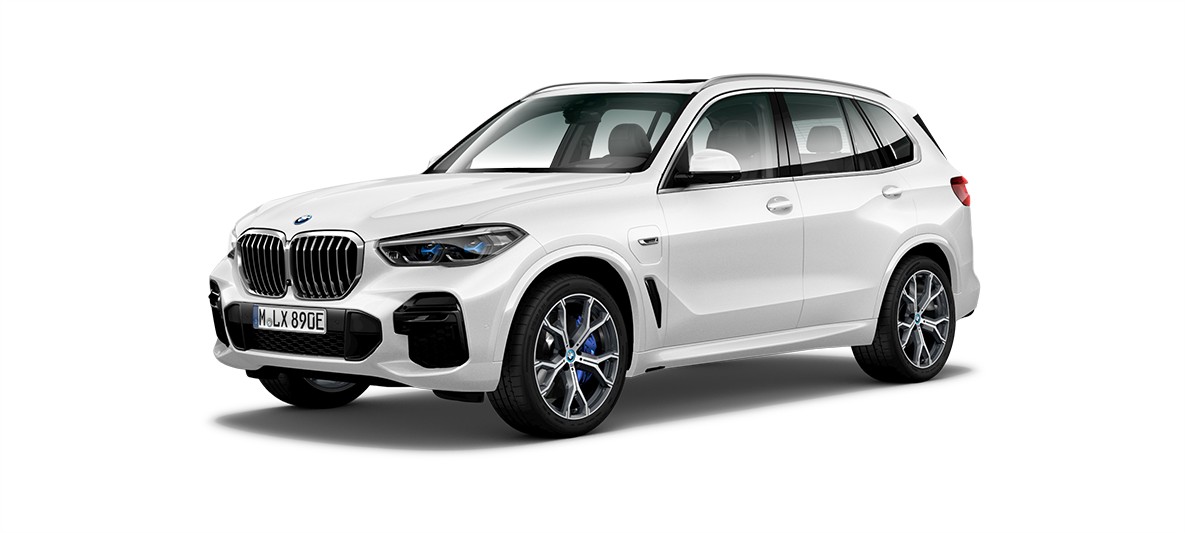
4. BMW X5 xDrive45e
BMW has built its brand on “The Ultimate Driving Machine” ethos, emphasizing control, responsiveness, and performance. That’s why many drivers are surprised—and often disappointed—when they discover that the BMW X5 xDrive45e plug-in hybrid includes an Auto Stop-Start system that cannot be fully turned off.
This SUV uses a complex plug-in hybrid setup, combining a turbocharged inline-six engine with an electric motor and battery pack.
It offers solid electric-only range and brisk acceleration, but BMW has baked the Auto Stop-Start functionality into nearly every driving mode by default. Even when using Sport mode or Battery Control mode, the system isn’t truly disabled.
This can be particularly frustrating for BMW owners accustomed to granular control over vehicle dynamics. In past models, drivers could fine-tune suspension, throttle response, and shift behavior—yet now they can’t even keep the engine running consistently.
The system may restart quickly, but there’s a momentary hesitation that performance-minded drivers immediately feel, especially in urban or dynamic driving conditions. The problem becomes even more pronounced in hilly terrain or when merging onto highways, where the delay from a cold engine start can compromise responsiveness.
Like its German counterparts, BMW defends the decision on efficiency and regulatory grounds. The vehicle’s fuel economy and emissions compliance depend in part on frequent engine shutoffs during idling periods.
However, BMW does not offer a user-configurable setting in the iDrive system to retain a deactivated state, nor is there a drive mode that explicitly disables it.
This leaves X5 xDrive45e owners stuck with a driving behavior that, while green, may feel inconsistent with the luxury-performance experience they paid for. Aftermarket solutions are available but carry risks related to software updates, diagnostics, and warranty concerns.
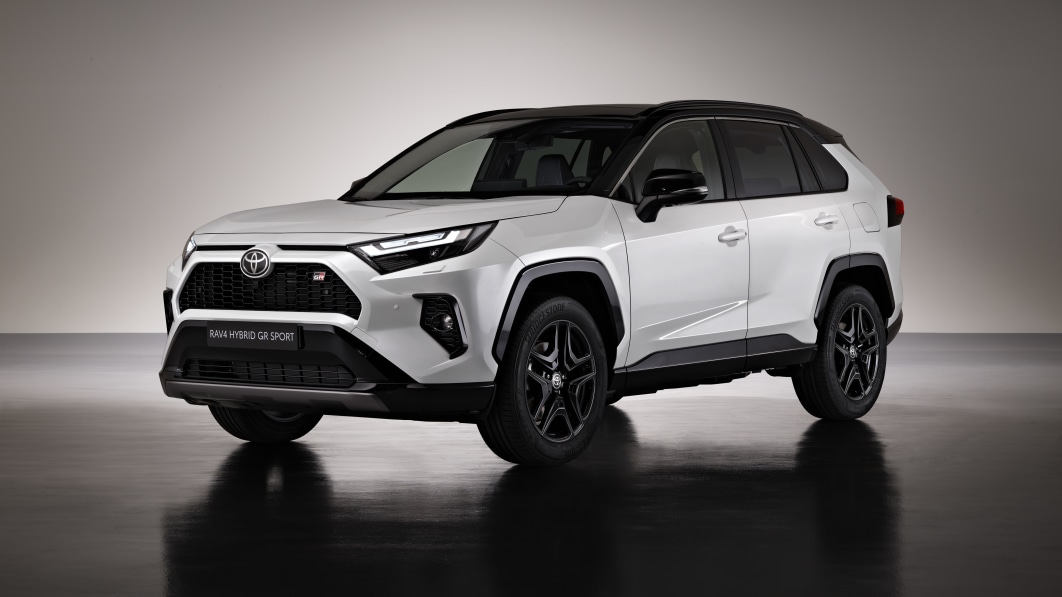
5. Toyota RAV4 Hybrid
The Toyota RAV4 Hybrid is one of the most popular vehicles in its class for good reason: it’s reliable, efficient, and affordably priced. However, its Auto Stop-Start system is non-optional and cannot be turned off, even temporarily.
Toyota has integrated this functionality as a core part of the hybrid experience, meant to conserve fuel and reduce emissions wherever possible.
While the vehicle’s hybrid system often allows for electric-only operation at low speeds, the gasoline engine still engages and disengages frequently, especially when the battery charge is low or during cold starts. The Auto Stop-Start functionality plays a major role in this transition and operates silently in the background with no user control.
The biggest issue for many drivers is not the presence of Auto Stop-Start, but the inability to influence it at all. There is no button to disable it, no menu setting, and no hidden diagnostic override available to consumers. As a result, even those who find the system’s activation annoying or disruptive must live with it daily.
Complaints often center on the slight hesitation upon restarting or how the system interferes with the effectiveness of climate control in hot or cold weather. For example, the engine might shut down when you’re trying to keep the A/C running during a summer traffic jam, leading to discomfort for occupants.
Toyota’s approach is rooted in simplicity and efficiency. The RAV4 Hybrid is built to deliver maximum value in terms of fuel savings, and the Auto Stop-Start system is part of that promise. But the trade-off is clear: drivers sacrifice a degree of operational freedom.
While this might be acceptable to some, others see it as another example of how manufacturers are shifting decision-making power away from the driver and toward automated systems, regardless of user preference.
Given Toyota’s reputation for reliability and engineering excellence, it’s surprising that the brand doesn’t trust users with a little more control over this increasingly controversial feature.
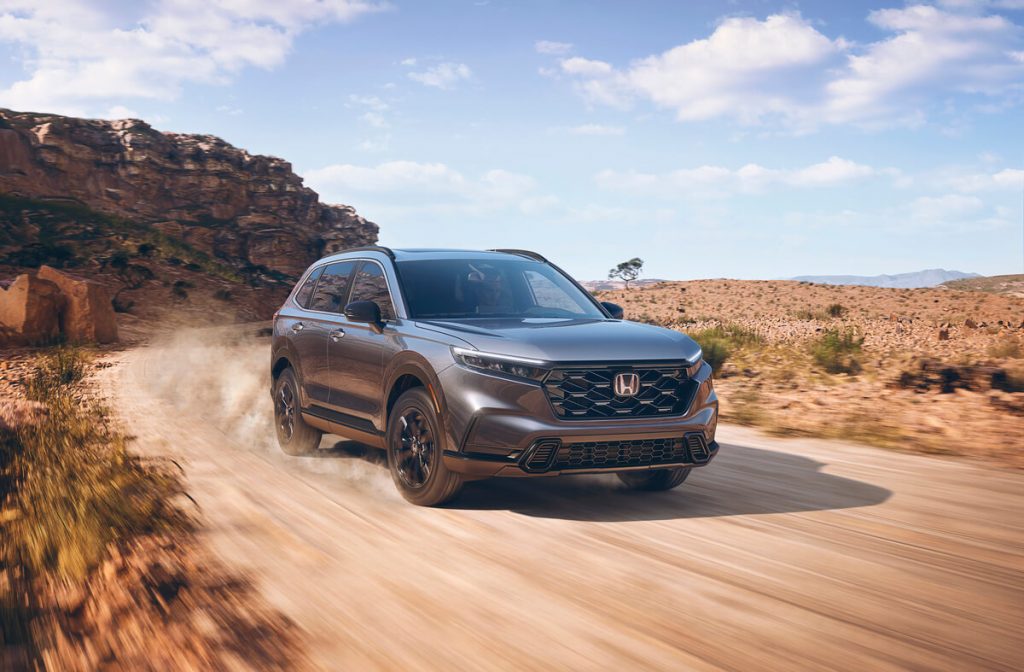
6. Honda CR-V Hybrid
The Honda CR-V Hybrid represents Honda’s commitment to entering the hybrid SUV market with a vehicle that balances practicality, comfort, and improved fuel efficiency.
Its powertrain uses a two-motor hybrid system, which helps achieve excellent MPG and smoother acceleration. However, the vehicle also includes a permanent Auto Stop-Start system that cannot be turned off by the driver.
Unlike some competitors that at least offer a physical button for temporary deactivation, the CR-V Hybrid locks the feature in as a core part of its operating logic. It operates silently, invisibly, and persistently, often leaving drivers with the uncomfortable feeling that they have no control over their engine’s behavior.
In city traffic, where drivers often have to navigate a mixture of rolling stops, stoplights, and intersections, the constant engagement of Auto Stop-Start can be frustrating. Some CR-V Hybrid owners report that the delay between pressing the accelerator and the engine restarting, while minor, creates an unpredictable driving experience.
The system can also interfere with HVAC performance, particularly in colder months when heat is needed continuously. While Honda has designed the system to balance efficiency and comfort, it still may not meet the expectations of drivers who prefer to be in control of such vehicle functions.
The lack of customization in an otherwise flexible and family-friendly SUV creates a noticeable contradiction in its design philosophy.
Adding to the frustration is the fact that Honda’s software and control systems don’t allow for even advanced settings via the infotainment screen to manage or modify Auto Stop-Start behavior. This all-or-nothing approach is particularly surprising in a vehicle class that is often chosen for its user-friendliness and convenience.
Drivers interested in modifying the system must rely on third-party plug-in modules or firmware hacks, which come with risks related to diagnostics, performance, and warranty support. For many prospective buyers, the inability to control Auto Stop-Start might be a dealbreaker in an otherwise excellent hybrid SUV.
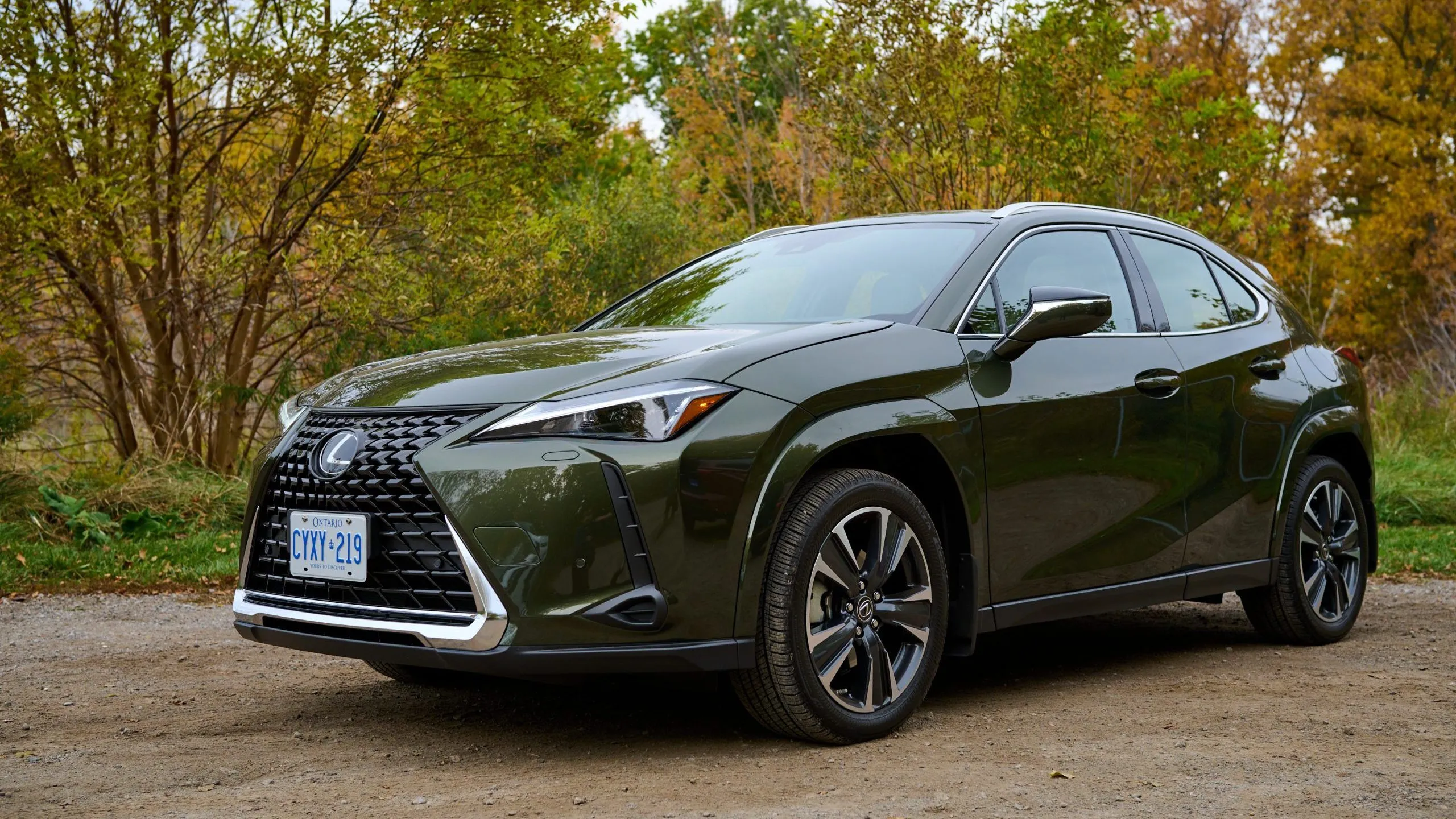
7. Lexus UX 250h
The Lexus UX 250h is a compact luxury crossover designed for urban drivers who want the benefits of a hybrid without sacrificing refinement. It’s built on Toyota’s GA-C platform and shares its hybrid powertrain with several Toyota models, including the Prius and RAV4 Hybrid. Because of this shared architecture, the UX 250h also inherits one of its most controversial features: a permanent Auto Stop-Start system.
In this Lexus, there is no physical switch, no infotainment option, and no way, short of tampering with the software or hardware, to prevent the engine from shutting off at idle. For a luxury brand known for giving customers a high level of control and comfort, this limitation stands out.
Despite the system’s near-silent operation, some UX 250h owners have expressed irritation at the lack of autonomy. Lexus has engineered the stop-start transitions to be as smooth as possible, often taking advantage of the electric motor to make them less noticeable.
However, the sensation of engine delay upon acceleration still exists, especially when the vehicle has been sitting at a stop for an extended time. In certain conditions, such as driving in extreme heat, congested traffic, or hilly areas, drivers might prefer to keep the engine running.
Unfortunately, the vehicle offers no official method to override the Auto Stop-Start system, making every trip subject to the whims of its programming. From a brand image perspective, Lexus typically excels in providing a serene and customizable driving experience.
The UX 250h, however, bucks that trend with this one-size-fits-all approach. For buyers expecting the premium treatment—including the ability to fine-tune or disable functions that affect the driving experience—the permanent Auto Stop-Start comes across as an unwelcome surprise.
It reflects a growing trend in automotive engineering: prioritizing efficiency metrics for regulatory or marketing purposes, even if it comes at the expense of driver satisfaction and control. The UX 250h is still a strong entry in the luxury hybrid segment, but its inflexibility in this area holds it back from being truly exceptional.
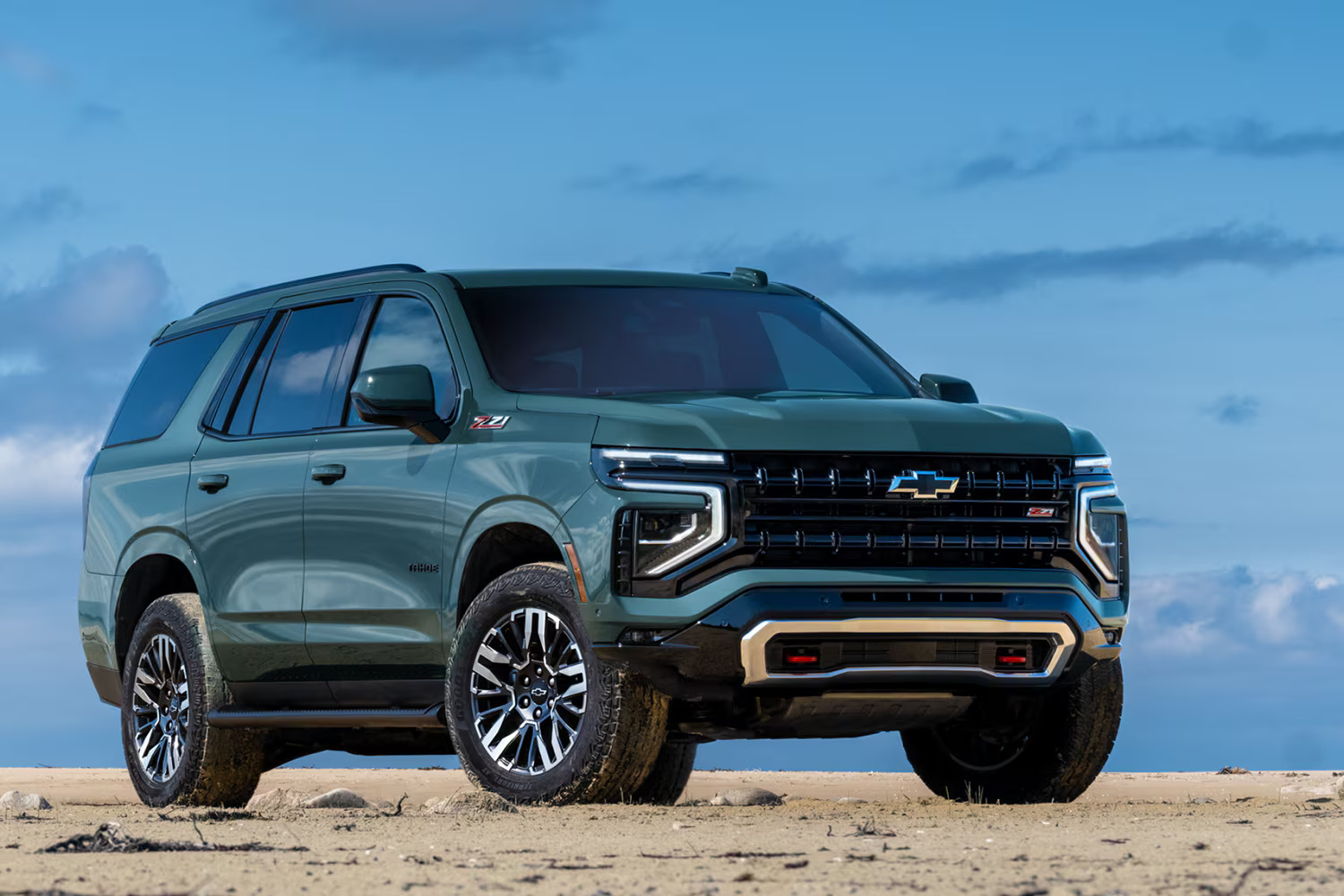
8. Chevrolet Tahoe with Diesel Engine
The Chevrolet Tahoe Diesel is a powerful, full-size SUV known for its impressive towing capability and long-range fuel efficiency. The 3.0L Duramax turbo-diesel engine delivers excellent torque, making it a favorite for drivers who need a strong vehicle for heavy-duty use or long road trips.
But despite its size, strength, and purpose-built design, GM has integrated an Auto Stop-Start feature into the diesel Tahoe—and has not provided a way for drivers to permanently disable it.
This decision is particularly controversial given that diesel engines are traditionally valued for their longevity and consistent operation, not frequent cycling on and off.
One of the key complaints from Tahoe Diesel owners is that the engine’s restart cycle isn’t as seamless as in gasoline-powered hybrids or mild-hybrids. Diesel engines take slightly longer to reignite, and although GM has optimized the system to minimize delays, there’s still a perceptible pause that can disrupt acceleration from a stop.
In practical terms, this could affect driver confidence in busy intersections, during quick merges, or in stop-and-go freeway traffic. Moreover, diesel engines rely on maintaining engine temperature to run efficiently, and repeated stopping and starting may interfere with engine heat management, especially in colder climates.
While Chevrolet does provide a button to disable Auto Stop-Start, it reactivates by default every time the ignition is restarted. There is no memory setting to retain the driver’s preference, even though it seems like a simple software fix. This creates a daily inconvenience that many owners consider unnecessary.
Aftermarket plug-in devices exist to bypass or “remember” the off state of Auto Stop-Start, but using these can void warranties or interfere with emissions diagnostics. Given the Tahoe Diesel’s focus on utility and durability, it’s baffling to many owners that such a mandatory, efficiency-focused feature was included without offering at least a configurable setting.
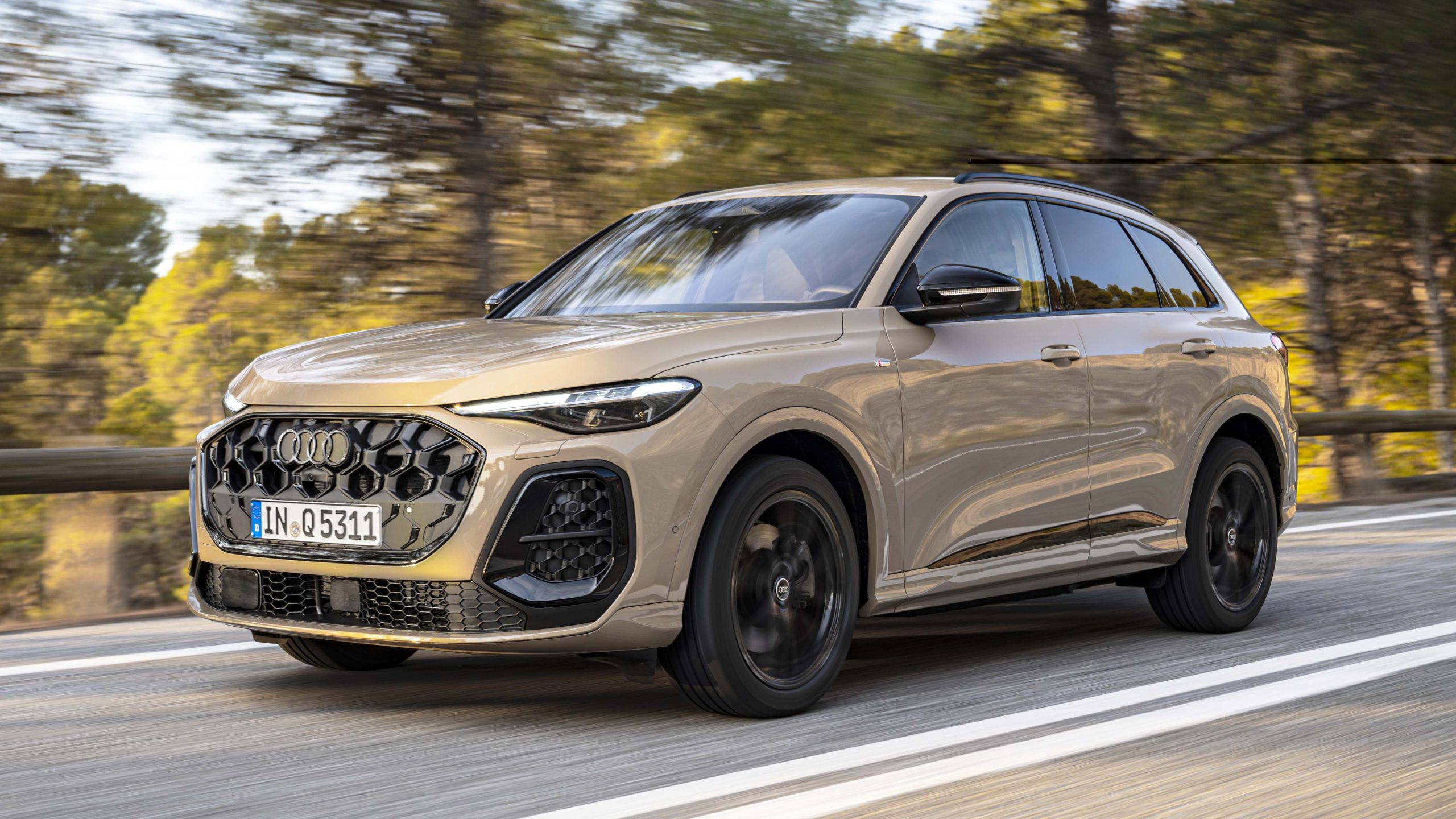
9. Audi Q5 TFSI e
The Audi Q5 TFSI e is a luxury plug-in hybrid SUV that combines German engineering with the environmental benefits of electrification.
It offers an elegant cabin, strong acceleration, and a generous list of standard tech features. However, like many modern PHEVs, the Q5 TFSI e incorporates an Auto Stop-Start system that cannot be permanently deactivated.
Audi has designed this system to work seamlessly with the hybrid’s multiple drive modes, including EV-only, hybrid auto, and battery hold, but none of these modes allow drivers to turn off Auto Stop-Start entirely.
One of the most frustrating aspects of the Q5’s system is its unpredictability. Depending on battery charge, temperature, and throttle input, the vehicle may cut the engine off and on more frequently than some drivers are comfortable with.
While most transitions are smooth, a slight lag during engine restarts can occur, particularly when the vehicle switches from electric to gas power after a complete stop. For those who value Audi’s reputation for performance and precision, this momentary hesitation can feel like a flaw in an otherwise meticulously crafted experience.
Moreover, the Q5 TFSI e does not provide a dedicated button to turn off the Auto Stop-Start system, nor does it offer any option to disable it via the MMI infotainment interface.
This leaves tech-savvy drivers, who might otherwise expect customization from a premium brand, with no control over a feature that significantly affects vehicle behavior.
The Auto Stop-Start system is hard-coded into the vehicle’s control unit, making third-party modifications risky and potentially incompatible with software updates. While the Q5 TFSI e is an impressive example of plug-in hybrid technology, its lack of user-configurable settings for Auto Stop-Start reveals a gap between engineering goals and real-world driver expectations.
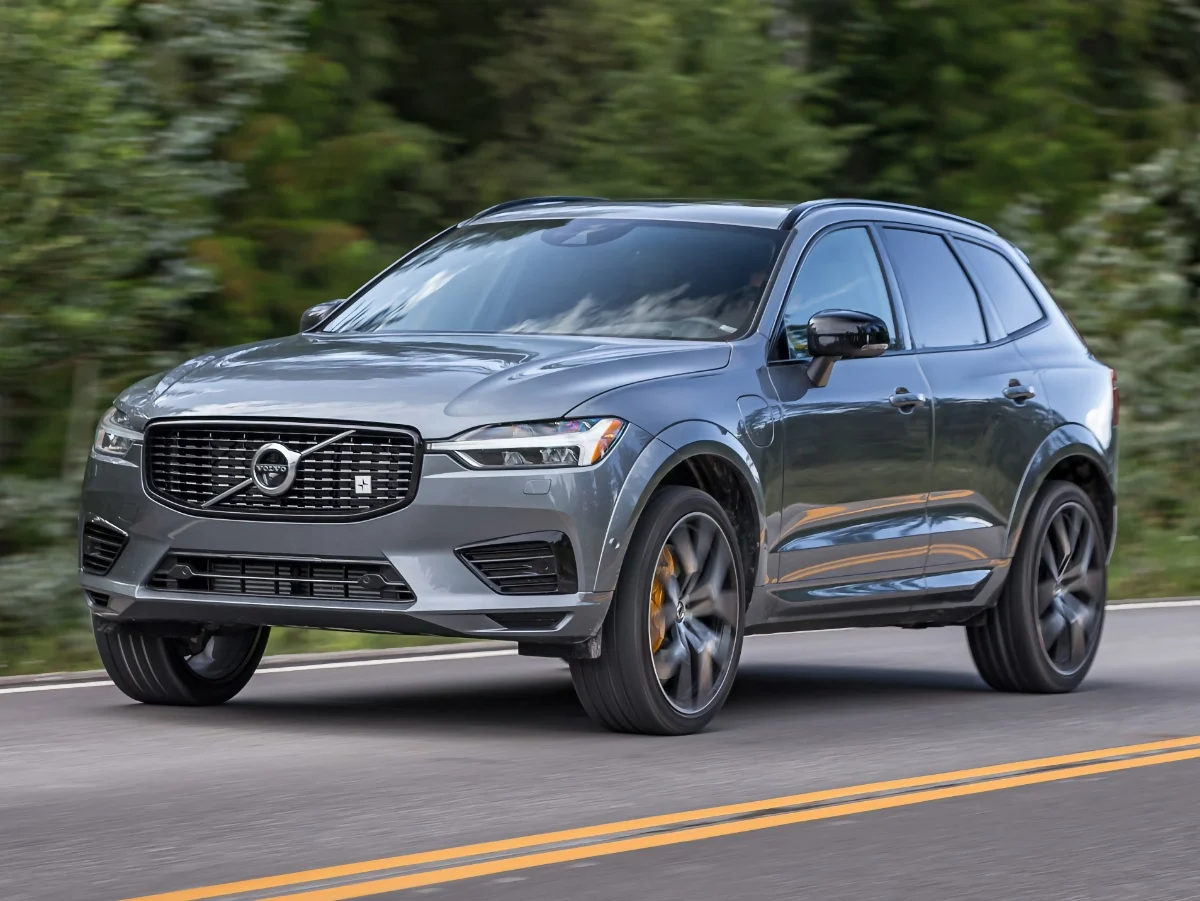
10. Volvo XC60 Recharge
The Volvo XC60 Recharge is a stylish, safety-focused plug-in hybrid SUV that underscores Volvo’s environmental values and Scandinavian design ethos. It offers a generous electric-only driving range, advanced driver assistance features, and a quiet, refined cabin.
However, like most modern plug-in hybrids, the XC60 Recharge includes an Auto Stop-Start system that is always active and cannot be disabled through standard vehicle controls. This is true even though many drivers, especially those spending time in variable traffic conditions, would prefer the ability to control how and when their engine shuts off.
Volvo has implemented the system with a clear focus on sustainability. The transitions between electric, hybrid, and gasoline power are designed to be unobtrusive, and in many cases, drivers may not even notice the engine stopping or starting.
However, when the engine is needed, for example, after the electric charge is depleted or during high-load conditions, the brief pause as it re-engages can be a source of irritation.
Drivers who are used to instant power from the gas engine may find the delay jarring, especially in situations that demand immediate acceleration. This can erode confidence in certain driving conditions, despite Volvo’s otherwise intuitive user interface.
What’s more surprising is that Volvo, a brand known for giving drivers a refined and intelligent experience, doesn’t offer any in-system customization for Auto Stop-Start behavior. There’s no dedicated button, no setting in the infotainment menu, and no driving mode that disables it completely.
While this consistency aligns with Volvo’s values of safety and efficiency, it may also alienate drivers who prioritize autonomy and personalized control.
Like others on this list, owners must turn to third-party solutions at their own risk—solutions that Volvo does not support and which may interfere with over-the-air updates or warranty coverage. For all its strengths, the XC60 Recharge serves as another example of a growing rift between environmentally driven design and driver-first engineering.
Also read: 10 Cars With the Smartest Hidden Storage Features for Everyday Convenience
As the automotive industry shifts toward greater efficiency, sustainability, and automation, Auto Stop-Start systems have become a standard fixture in many vehicles.
While these systems are often well-integrated and technically sound, they don’t always mesh well with every driver’s preferences or needs. The vehicles listed in this article—ranging from hybrids and plug-in hybrids to luxury SUVs and full-size trucks—demonstrate how pervasive and persistent this feature has become.
For some, the inability to disable Auto Stop-Start is a minor inconvenience, outweighed by fuel savings and lower emissions. But for others, particularly those who value performance, consistency, or climate control, it represents a frustrating loss of control.
The fact that several of these vehicles don’t even offer a temporary off switch, or reset it automatically at every startup, can make daily driving less intuitive and more bothersome.
Ultimately, this list serves as a cautionary guide for buyers who care about having full command of their vehicle’s behavior. If you’re someone who finds Auto Stop-Start disruptive or unwanted, it’s worth doing your research before purchasing.
As automakers move toward electrification and compliance-driven design, the ability to customize core vehicle behaviors may become increasingly rare. And for many drivers, that loss of autonomy may be too steep a price to pay for a few extra miles per gallon.

